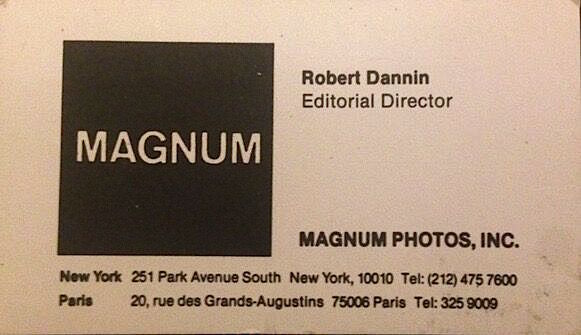 [Editor’s Note: Here we continue “The Dannin Papers,” a series of Guest Posts by Robert Dannin, who served as Editorial Director of Magnum Photos from 1985-90. This first piece — an account of his years with Magnum, in which he revises and expands on an interview that Russell Miller conducted with him in 1995 — appears in six installments, of which this is the last. For Part 5, click here. — A. D. C.]
[Editor’s Note: Here we continue “The Dannin Papers,” a series of Guest Posts by Robert Dannin, who served as Editorial Director of Magnum Photos from 1985-90. This first piece — an account of his years with Magnum, in which he revises and expands on an interview that Russell Miller conducted with him in 1995 — appears in six installments, of which this is the last. For Part 5, click here. — A. D. C.]
•
Robert Dannin Interviewed by Russell Miller, 1995
(revised and expanded, 2016 — part 6)
Robert Dannin: (continued) … By contrast with Sygma, Magnum was more like a Classic Oldies collection. Cartier-Bresson and Capa. Eve Arnold’s take of Marilyn Monroe, Dennis Stock’s super-famous James Dean pictures had comparable revenues, but they were already “contributing” photographers, meaning a reduced percentage split with the agency.
With Steve McCurry and James Nachtwey I saw an opportunity to expand Magnum’s market share and accommodate their expectations. Jim had a contract with Time, while Steve was nearly always on assignment for National Geographic. As nominees neither was under any obligation to share these revenues with Magnum. In the unlikely event I got them an assignment from another publication it was a different story. Yet to demonstrate their enthusiasm, Jim and Steve waived this option and immediately began running their respective magazine assignments through the Magnum office. If they were giving us the full 40 percent on good faith, it was important to reciprocate with a big push to stimulate their library sales.
Not everyone was willing to make that commitment. Tom Sennett, also a nominee that year, had no such eleemosynary spirit and consequently the relationship failed. Bill Allard same thing, it was more than he cared to share with the agency.
Nachtwey had extensive files from Central America and Northern Ireland, originally syndicated by Black Star in collaboration with Sipa for foreign distribution. McCurry came with almost eight years’ worth of material from Afghanistan and was now working on a year-long story about the Philippines. His secondary sales were managed by Lauren Stockbauer, a freelance photo editor.
After reviewing their past sales figures I thought we could do much better, especially in international sales, and determined to ramp up syndication immediately. The first order of business was importing and reformatting their materials into Magnum.
Distraught as he was over Nachtwey’s sudden departure from Black Star, Howard Chapnick did everything possible to make the transition painless. It spoke volumes about Howard and his respect for Jim. He allowed us to hire a young woman who had been interning for him, knew their filing system, and could run between the offices to locate missing slides or caption sheets.
Lauren tried the same for Steve, but it was slightly more chaotic. They had been sharing an apartment at Stuyvesant Town, and the place was stuffed floor to ceiling with boxes of slides, negatives and contact sheets. I spent a weekend trying to help and remember the moment the confusion overwhelmed us. Steve seemed hopelessly disorganized, like Leon Errol in a comedy short. I couldn’t stop laughing for about an hour. To look at his operation today is another way to realize how far he’s come as a photographer.
•
Managing the import/reformat operation was my first important task at Magnum. Pam Dunston, my assistant editor, got things started but soon left to work at Newsday. Françoise Piffard came over from Contact. Long story, few details, she wanted out of there quickly and also needed a place to live. I had a vacant apartment literally steps away from the office on East 21st Street that I sublet to her. Françoise is a fantastic editor and works very fast; she quickly became an indispensable member of our team. In 1994 Françoise returned to Paris to become managing editor for Sebastião Salgado’s Amazonas Images. In the archives Liz Gallin had all the knowledge in her head and a terrific staff including Mary Swanson, Temple Smith, Sue Brisk, George Slade, and Ziya Danishmend.
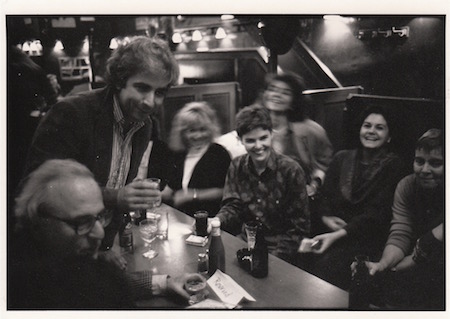
Magnum Photos, Old Towne party, 1986. (l-r) Burt Glinn, Gilles Peress, Catherine Chermayeff, Pamela Dunston, (unidentified) Françoise Piffard, Elizabeth Gallin. Photo by Susan Meiselas.
We requisitioned eight new lightboxes and set up four consoles — two in the library, two in our office. The top light box was fastened to the bottom one at a 120-degree angle. There were four or five linear racks to hold the slides loosely for story-boarding. One sorted chromes with a loupe on the flat box and then posed them in rows up top to lay out the narrative left to right, top to bottom.
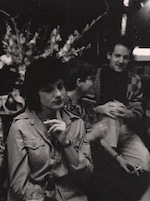
Magnum Photos, Old Towne party, 1986. (l-r) Janice Lipzin, Pamela Dunston, Ziya Danishmend. Photo by Susan Meiselas.
We unpacked the slides and overnight the place was humming. I was in constant motion between the phone, the telex, and a lightbox. Françoise and I would check our respective edits and then bring in Liz to finalize the choices and suggest supplementary materials for stock sales.
We were in and out of the archives constantly. The edited sets went to the duper. Tom Richardson, Gilles Peress’s brother-in-law, wrote and printed captions on a new dot-matrix printer. Yetish Nanjundapa was making black & white prints ten hours a day.
I sent out publicity letters to publishers and called about a hundred editors in New York, Paris, London, Milan, Rome, Hamburg and Munich. Magnum comptroller Paul Gauci looked excited at all the activity. Morale was on the rise. The frequency of telex traffic from Jimmy Fox in Paris meant that the spirit was contagious. Photographers were getting excited. Alex Webb came by and looked bewildered. That’s when we had that conversation about the duping machine. (See part 2.)
Susan Meiselas and Gilles Peress showed up a day or two later acting like fire-department inspectors. A lot of back-and-forth, then closeted in the photographers’ room, checking expenses with Paul. I followed around with them and watched Peress glare at Jim’s take from Northern Ireland. It was spectacular color work, with close-ups of IRA street fighters whipping flaming Molotov cocktails over the barricades. Gilles’ black & white pictures were equally good, but you could tell his circuits were overheating, steam coming out his ears.
Susan found Françoise’s layout of Jim’s stuff from El Salvador and acted as if she’d never seen it before. This was not the case, because Jim participated in Susan’s and Harry Mattison’s El Salvador anthology. That project comprised the work of thirty photographers and, back then, appeared to be a paragon of unselfish cooperation. Now Jim was a competitor.
Why did she feel challenged? Their work was different. Her approach was ethnographic, for instance, peasant women performing domestic chores, but with an eye for the theatrical interventions that pull people into the vortex of history, as when she immersed her viewers in the carnivalesque absurdity of tragic situations, for example, the dangerous slob Eugene Hasenfuss, the downed Iran-Contra pilot, sitting in a Managua prison.
Susan never shied from violence, her pictures conveyed the full range of emotions surrounding a conflict. On the other hand, Jim’s pictures were precise and analytical; he had the ability to dissect an event into the syncopated rhythms that underpin good magazine reporting. If Henry Luce ever dreamed the ideal Time magazine photographer, it was Jim. He could ace every situation. So Susan’s dissatisfaction couldn’t have been political except in a very narrow sense because all the journalists down there were focused on the FMLN uprising, the church, the ineptitude and questionable legitimacy of the Duarte government.
I knew the only photographer who crossed partisan lines to cover the death squads of Major Roberto D’Aubuisson. But mention the name Jeff Harmon and people would stare in disbelief or even become hostile, an early symptom of political correctness. That Susan and Jim were on the same side gave one pause when trying to understand her attitude in terms of Magnum.
Susan did great work. Fortunately, many others thought so too. This was less about competition and more an issue of self-confidence, understandable maybe in terms of a woman working in a male-centric profession. Then again, she never wanted anyone to think about her as a “female photographer.”
Same story for Gilles. His work and Jim’s in Ulster were complementary. The commercial values were equal, not only for different publications but for the same ones. In my job there was nothing more inspirational than to open a bid with a hand like that. It created an opportunity to dialogue with editors, art directors, and publishers and above all to convince them that we were providing more than illustration. Their readers deserved multiple views recorded by photographers as authors whose distinct voices furnished several layers of visual interpretation for the same events. Clifford Geertz, the anthropologist, called it “thick description.”
Even the newsweeklies were making strides to accommodate color and black & white sets in the same story, or a main text with color supplemented by a sidebar in black & white. Clearly my mandate was making more space for Magnum. We were about defending and expanding interpretive multiplicity beyond the ideological vanishing point to a place where all sides of the conflict became visible — combatants and civilians caught in the crossfire, not just Israelis and Palestinians but the Bedouins and Druze, Ethiopian immigrants; NATO and Warsaw Pact; Castro and the Cuban exiles. The more coverage the better. To me there was no such thing as too many pictures.
But now Susan and Gilles were pulling rank and echoed Alex. Listen, these guys are only nominees. We don’t know if they’re going to make the grade as members. So slow down!
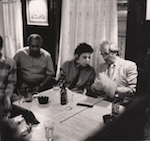
Magnum Photos, Old Towne party, 1986. (l-r) Allen Brown, Lauren Piperno, René Burri. Photo by Susan Meiselas.
When they left, the staff was incredulous. I glanced at Alan Brown for guidance. Alan was Magnum’s shipping clerk. Alan gave me the same look every time Peress visited his rage on staff. It was like, when is this guy going to grow up? (A holdover from the old days, Alan was supposedly still dressed in GI issue when he met Bob Capa at a Greenwich Village bar after the war. Alan knew something about unruly kids too. He and his wife raised more than 30 foster children.)
First, I asked everyone to get back to work. I wasn’t going to let five percent of the membership close down production for such trivial reasons. I then phoned Erich Hartmann. Call an executive board meeting if you have to, but what sense does it make to sabotage our own business? Jesus Christ, they’re bailing us out! Maybe he called Alex, who was his VP, but that was the end of it. We even got a new duping machine.
•
This was territorial pissing, exercising seigneurial rights over specific places around the world. To me it was a bizarre reflection of the same Cold War stupidity, nonetheless a continual source of internal conflicts that could flare into major confrontations.
Only a few years later Philip Jones Griffiths went ballistic when Nachtwey was assigned by Time to shoot a story on the victims of Agent Orange (dioxin) poisoning in Vietnam. As important as the story was, it was really a highly orchestrated propaganda campaign. Philip certainly didn’t mind that his buddy Greg Davis got himself invited too. Or maybe he was mad that Greg didn’t get the Time assignment. It was uncharacteristic of him. And then came the pressure to get a deal with Newsweek for his nearly identical pictures. I really respected Philip, but this was demoralizing.
Another instance occurred after Stuart Franklin arrived in Beijing to cover the massacre in Tianamen Square. Patrick Zachmann was working somewhere else in China and must have been upset about missing the big story. He threw a tantrum when we asked him to lend Stuart some film. Shameless.
•
 Not everyone was sour, at least not all the time. On a given day you could walk into the photographers’ conference room to find Philip holding forth on camera techniques. Like a Marine sharpshooter cleaning his weapon, Philip could break down a Leica into tiny parts and reassemble it. I was sure he could do it blindfolded if challenged. Eli Reed would be there talking passionately about a new lens, parsing the merits of Nikon versus Olympus. Eugene Richards strolled back and forth to the darkroom, loupe hanging around his neck, contact sheets in hand. Inevitably Leonard Freed would come by in the late afternoon eager for more shop talk.
Not everyone was sour, at least not all the time. On a given day you could walk into the photographers’ conference room to find Philip holding forth on camera techniques. Like a Marine sharpshooter cleaning his weapon, Philip could break down a Leica into tiny parts and reassemble it. I was sure he could do it blindfolded if challenged. Eli Reed would be there talking passionately about a new lens, parsing the merits of Nikon versus Olympus. Eugene Richards strolled back and forth to the darkroom, loupe hanging around his neck, contact sheets in hand. Inevitably Leonard Freed would come by in the late afternoon eager for more shop talk.
When Eve Arnold flew in from London it was always with a deal in the works. A few minutes after she walked in, you’d hear the receptionist announce a call for her from Robert Gottlieb, the director of Knopf. People breezed through from Europe now and then, René Burri, Bruno Barbey, Chris Steele-Perkins, Ian Berry. When his solo show opened at MoMA Henri Carter-Bresson set up an easel on the fire escape to paint a Gramercy Park cityscape.
(To be sure, there were moments of genuine camaraderie at Magnum, unlike anything I had experienced elsewhere. Sipa had never lacked for enthusiasm but attracted its share of rookies and dilettantes. And god forbid more than a couple of photographers in the New York Sygma office at once, Eliane Laffont would go batshit. “Why aren’t they out working! Unless they’re dropping off film …” One day she pulled me into her office while her husband Jean-Pierre Laffont was in the photographers’ room. She was annoyed. “Your job is to keep him working. I don’t want to see him around here! GOT THAT?” Poor J-P slept in the maid’s room. As obnoxious as he was, you could almost feel sorry for him.)
•
 Over the next several months comptroller Paul Gauci gave me the green light to expand our staff. Ilike Furesz, a Hungarian-Italian journalist, became an invaluable addition to the editorial department, coordinating assignments and providing a direct liaison to the Italian media. Around this time Corriere della Sera and La Repubblica, the Milan and Rome dailies respectively, brought out glossy magazine supplements. Almost overnight we acquired a major new market for assignments and secondary sales. We recruited Janice Lipzin (formerly of Sygma) and Peter B. Kaplan to open an advertising department, a previously untapped revenue stream. (Eventually Janice left Magnum and moved to the Lehigh Valley in Pennsylvania where she established the Olympus InVision Photo Festival. She died earlier this year after a heroic bout with cancer.)
Over the next several months comptroller Paul Gauci gave me the green light to expand our staff. Ilike Furesz, a Hungarian-Italian journalist, became an invaluable addition to the editorial department, coordinating assignments and providing a direct liaison to the Italian media. Around this time Corriere della Sera and La Repubblica, the Milan and Rome dailies respectively, brought out glossy magazine supplements. Almost overnight we acquired a major new market for assignments and secondary sales. We recruited Janice Lipzin (formerly of Sygma) and Peter B. Kaplan to open an advertising department, a previously untapped revenue stream. (Eventually Janice left Magnum and moved to the Lehigh Valley in Pennsylvania where she established the Olympus InVision Photo Festival. She died earlier this year after a heroic bout with cancer.)
Personally, I began to develop working relationships with the New York picture editors. Arnold Drapkin, Robert Stevens (Time); Jim Kenney, Jimmy Colton, Guy Cooper, and Karen Mullarkey (Newsweek); Mark Busell, Peter Howe, Kathy Ryan (New York Times Magazine); John Echave, Sean O’Sullivan (U.S. News & World Report); Ruth Eichhorn, Brigitte Barkley, Christiane Breustedt (Geo); Dieter Steiner (Stern), David Hershey (Esquire), Alice George (Fortune), Susan Vermazen (New York magazine). We even breached the final frontier and started working with the dailies, Eric Meskauskas at the Daily News and Jim Dooley at Newsday.
I probably seemed fanatical, foaming at the mouth, offering up six or more stories every time I got an editor on the line. But they all cared deeply about photography and loved substantive conversations. Having come to print journalism via the agency route, I received from them tremendous insight into the thinking of the art directors, publishers and the all-powerful publishers.
Mostly I tried to put everyone on the same page, de-dramatize the often adversarial relationships within a very competitive industry. When closing the circle to discuss story ideas with the photographers we rehearsed objections and criticisms from all sources in order to create watertight proposals. Don’t hamstring your editor, give her all the ammunition necessary to sell the story.
•
(Russell Miller’s 1995 interview concluded with a brief discussion of Magnum’s boycott of the “Day in the Life” series published by Harper Collins. Other interviewers, including Magnum’s own historical research department, frequently ask me to comment on this topic, because of its importance to the history of the industry. I have omitted this here in favor of a more extensive chronicle of that episode to come, along with more tales of my time at Magnum and my departure therefrom. — R. D.)
Text copyright © 2016 by Robert Dannin. All rights reserved.
•
(For an index of links to all posts in this series, click here.)
•
Robert Dannin holds a doctorate in linguistics and anthropology from the School for Advanced Studies in the Social Sciences in Paris. He taught at Brown University, New York University, and Suffolk University in Boston. He is co-founder and director of the Ddora Foundation, and serves as a trustee at Mount Ida College in Newton, Mass. Among his scholarly publications, Black Pilgrimage to Islam (Oxford University Press, 2002) was the first ethnography of Islamic religious conversion in America.
In 2009 Dannin was awarded an inaugural residency at the Norman Mailer Writer’s Colony. His most recent work is a biography of Jacob Schiff, the Gilded Age banker and rival to J. P. Morgan.
Dannin paid for his education by working as a cook, translator, ghostwriter, and copywriter/photo editor at Sipa Press in Paris from 1978 to 1981. He was news editor for Sygma New York and later the editorial director of Magnum, where he produced Sebastião Salgado Jr.’s “An Archaeology of the Industrial Age,” eventually published as Workers (Aperture). His other editorial credits include James Nachtwey’s Inferno (Phaidon) and the survey Arms Against Fury: Magnum Photographers in Afghanistan (powerHouse).
Dannin is the author of numerous critical essays about photojournalism. From 1995 to 1997 he served as special consultant on photography to the office of the New York Attorney General. To contact Robert Dannin, click here.


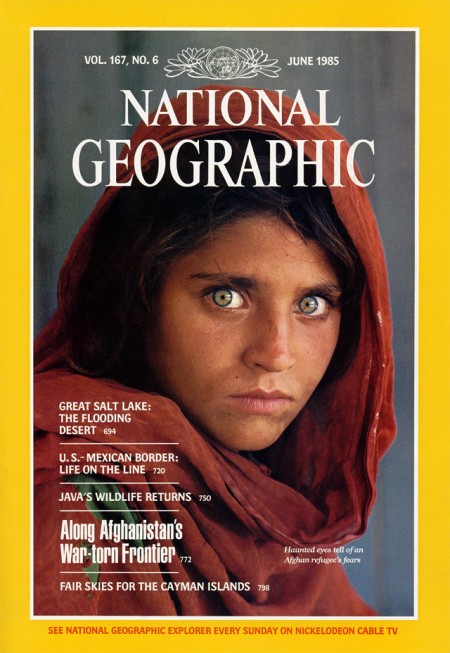
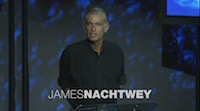
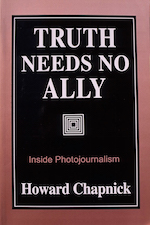
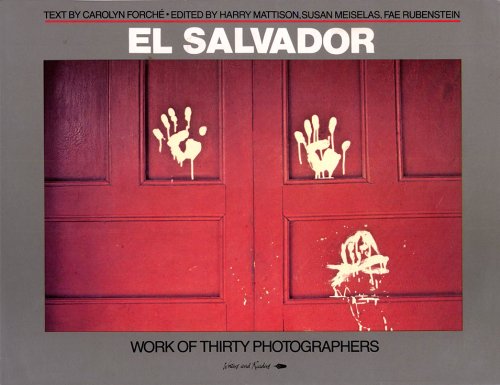
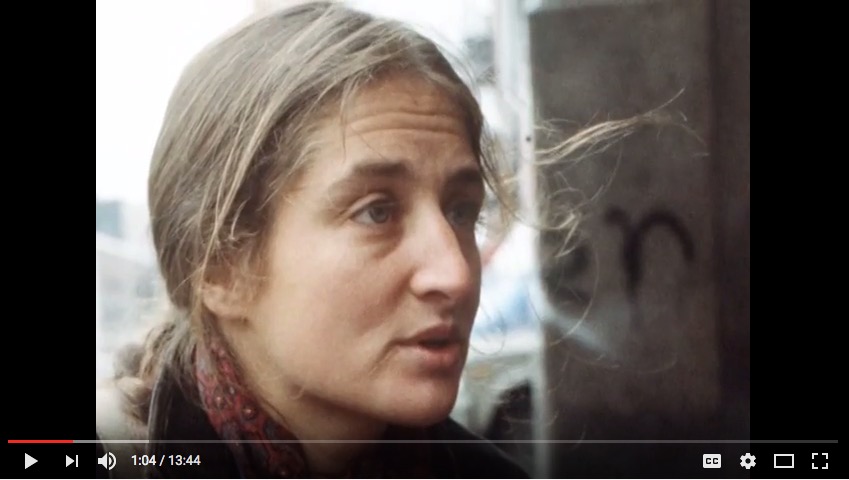
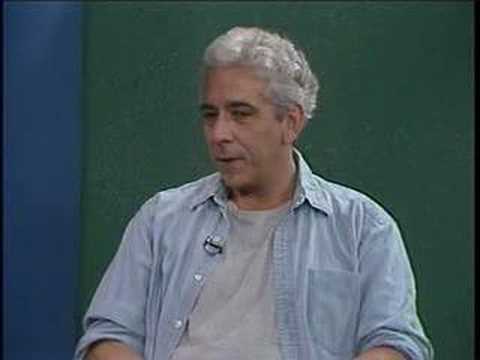
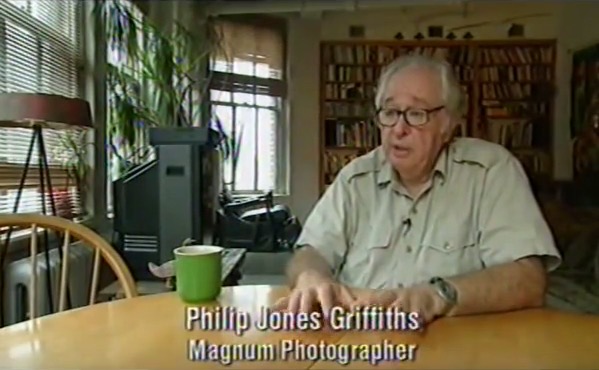
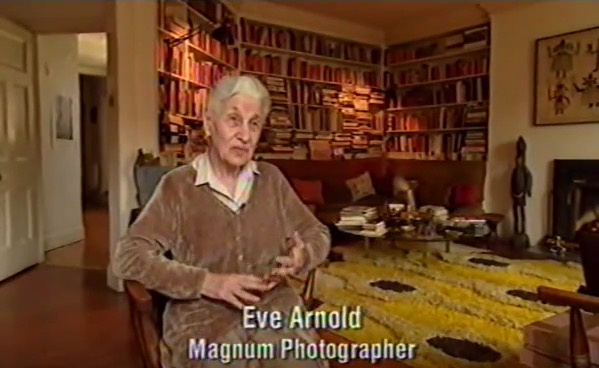
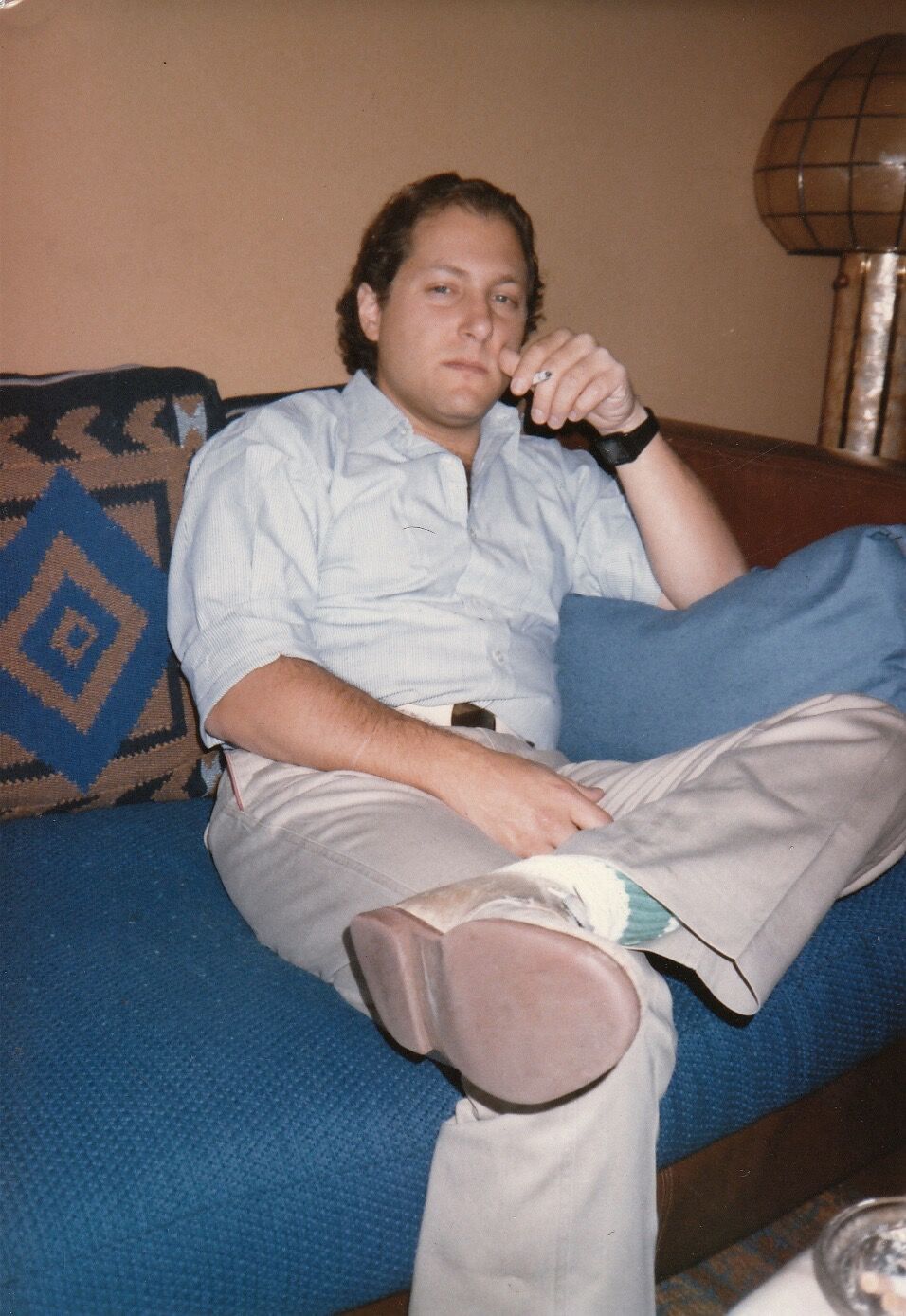
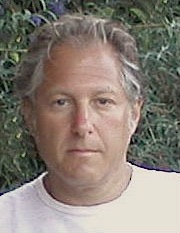
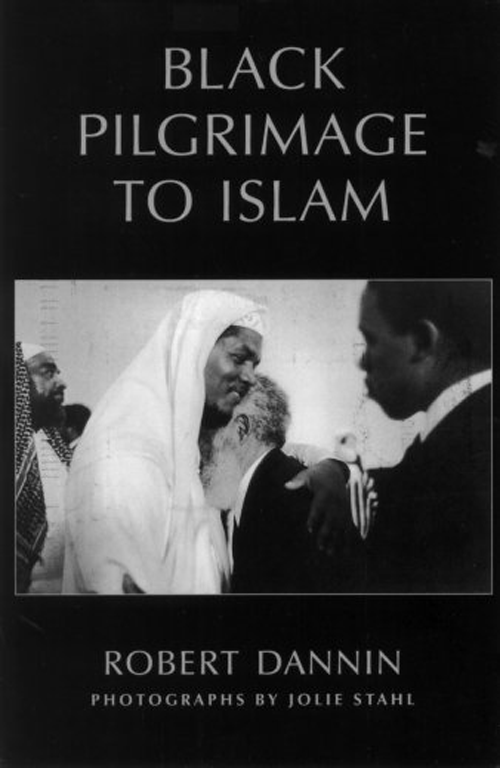




Absolutely fascinating on both a biographical and social-psychological level, and very revealing of the interpersonal dynamics of Magnum. Perhaps the problem is the same for all associations of competitive “equals”. A hierarchical organisation where the hierarchy is accepted by those within it probably creates less stress for its members. But that would never have been possible for this photo agency. Life was certainly not easy for the staff members at Magnum. I wonder if things are very different now?